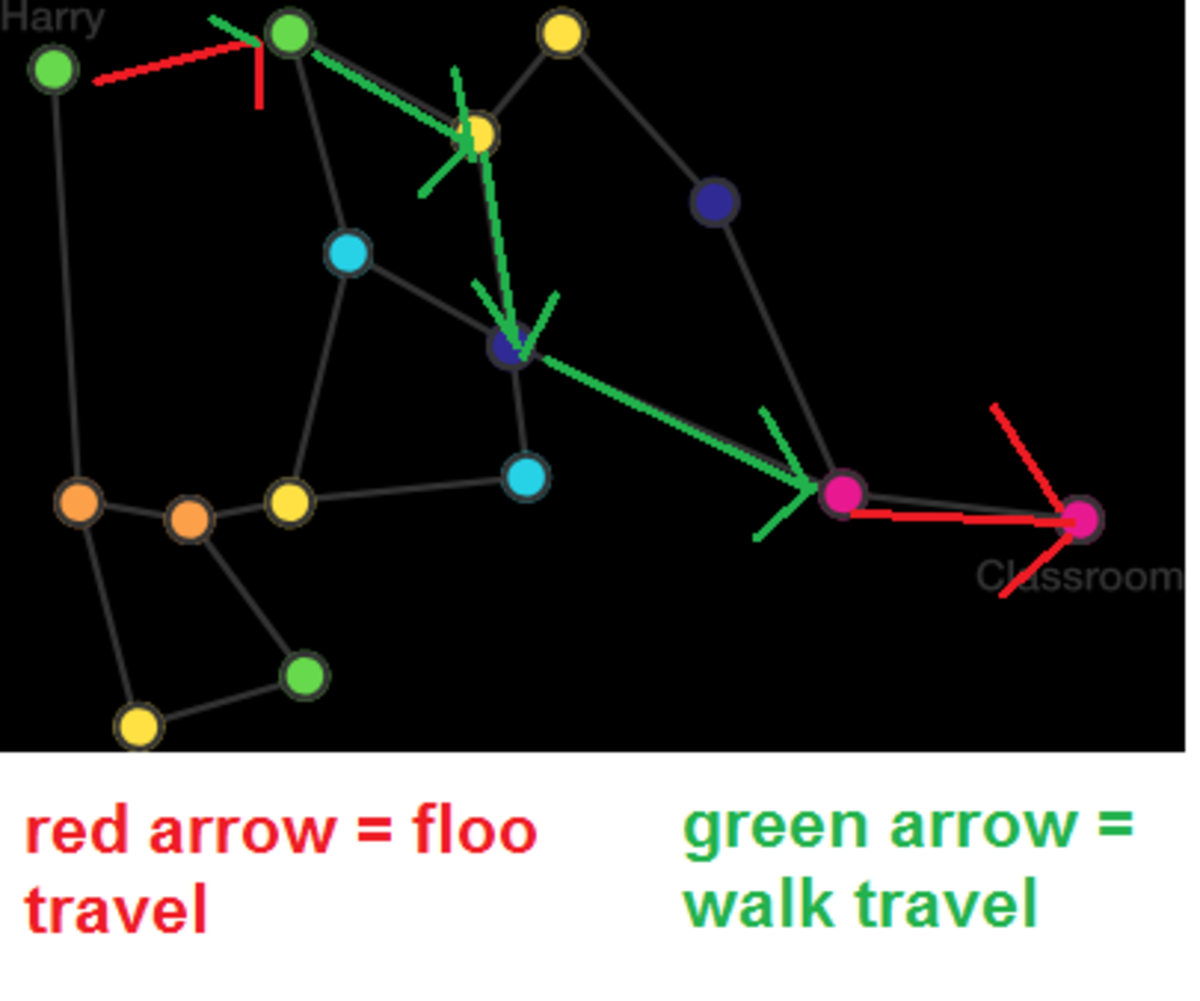The Floo Network
Harry is going to be late to his class, so he needs to move as quickly as possible.
Here is a map of his institution, where the edges represent roads he could walk through, and the nodes of the same color are those between which he could teleport using the Floo Network:
What is the least number of roads he would need to walk through to get to the classroom?
Clarification:
Teleportations happen instantaneously and thus are not included in the count.
This section requires Javascript.
You are seeing this because something didn't load right. We suggest you, (a) try
refreshing the page, (b) enabling javascript if it is disabled on your browser and,
finally, (c)
loading the
non-javascript version of this page
. We're sorry about the hassle.


Paths traversed = 3
There are other 3-path routes, but this was the easiest for me to animate.
In addition, @Kradak Thomas inspired the following image, which shows the network reduced down to just the connections that each colour makes (as all nodes of the same colour are equivalent). I encourage giving his solution an upvote too.
This proves that there aren't any 2-path solutions.